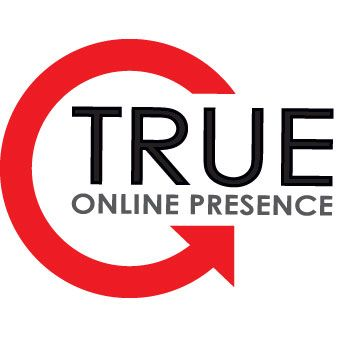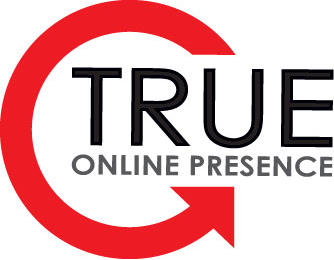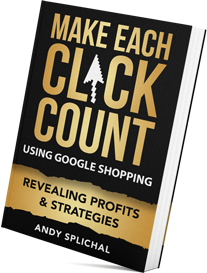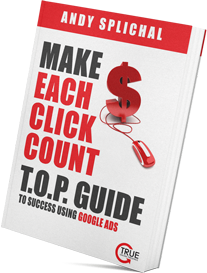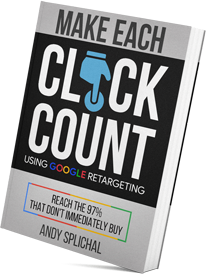Grow Your Business
Increase Sales. Increase Profits. Increase Traffic.
We Specialize in E-Commerce Pay-Per-Click Management
Schedule a complimentary discovery call to learn how we can help you today!


As Seen On:





What Can I Expect?
Here’s Why Our Clients Continue To Work With Us Year After Year!
More Sales
True Online Presence will help you identify & target high value traffic, generate more sales, at higher profitability!
Peace of Mind
We offer Fully Managed Solutions.
We’ll take control of your ads & optimize for the biggest ROI with the latest strategies & techniques using what is working today.
Experience
Expert Knowledge by Your Side.
Managed by founder Andy Splichal, author of the Make Each Click Count books, host of the MECC Podcast & founder of MECC University.
Focus
Personal Attention for Your Ads.
True Online Presence guarantees your account will get the attention it deserves, never be delegated to a junior level marketer.
Results
No Long-Term Contracts.
We believe in delivering results, not tying our clients down into long-term contracts. If we don’t deliver results, you don’t have to stay!
Transparency
Accurate, Routine Reporting
True Online Presence delivers monthly reports that allow you to see the results of your investments. No snake oil – just results.
Sound Good? Let's Talk!
It’s easy to get started. Just click to schedule your FREE growth discovery call.

Meet Andy Splichal
“Many people move to Los Angeles to become movie stars.
I moved here to become an advertising star…“
World’s Foremost Expert on Ecommerce Growth Strategies
Andy Splichal is the celebrated author of the Make Each Click Count Book Series, the host of the Make Each Click Count podcast, the Founder & Managing Partner of True Online Presence, the Founder of Make Each Click Count University and sought after Speaker. Andy was named to The Best of Los Angeles Award’s Most Fascinating 100 List in both 2020 and 2021.
Originally from the Midwest, Andy is a proud graduate of the University of Southern California and now resides in Pasadena, CA. Andy has been working with eCommerce companies since 2000. A national voice for ecommerce business growth, he has been helping companies profitably increase their online sales and profits for more than two decades.
Andy is proud to be personally involved in each account managed by True Online Presence. This is one of the distinguishing factors that sets True Online Presence apart from the competition.
WHAT OUR CLIENTS ARE SAYING
Here's Why Our Clients Continue To Work With Us Year After Year!
"Knowledgable and professional."
"True Online Presence has maintained profitable PPC campaigns for us for over 4 years. We find Andy to be honest, knowledgeable and professional. We have used other firms in the past who sign you up with a crafty salesman and then hand your account over to an inexperienced manager. Having Andy take care of us the way he does is a breath of fresh air, knowing that our PPC management is in capable, experienced hands."
"Google Ads he wrote the book...
literally, he has a book on it."
"I have a great experience working with Andy, really knows his stuff and what he is doing. When it comes to Google Ads he wrote the book...literally, he has a book on it."
"You're not wasting money."
"I'm lucky enough to have found Andy. I met you and found somebody reputable who really understands their way around advertising and can really get in and help drive sales. It just takes a very special person that really understands the marketplace to make sure that you get the right return on your ad spend and you're not wasting money."
Sound Good? Let's Talk!
It’s easy to get started. Just click to schedule your FREE growth discovery call.
DO THESE ISSUES SOUND FAMILIAR?
FAQs + Major Issues that True Online Presence will Help You Solve:
How Do Agencies Determine How Much They Charge Clients Per Month?
Many PPC/SEM agencies charge a percentage of your ad spend. This never made sense to us as agencies are then incentivized to spend more of your money. The more they spend the more they make. That is why True Online Presence charges our clients either a FLAT MONTHLY FEE based on the number of skus and the marketing channel we are managing OR for larger clients a percentage of ad generated revenue, never ad spend!
Who Will Be Optimizing My Account?
All accounts are managed by senior managers at True Online Presence. Depending on the size of your account, many large agencies pass off accounts to junior marketers with limited experience. Not True Online Presence. With us you can be sure your account is being managed by the same people you speak with during the discovery phase.
Are You A Google Agency Partner?
Yes. True Online Presence is proud to be a Google Agency Partner. Being a Google Agency Partner consists of handling a minimum of $20,000 in spend in the last 90 days; having at least 50% certified users in Google’s system and consistently meeting Google’s performance requirements.
Do You Need To Agree To A Long-Term Contract When Working With An Agency?
Many agencies make you sign a minimum one-year contract. With True Online Presence we ask for an initial 3-month commitment while we configure and optimize your account for performance. After that, all agreements are month-to-month. We want to earn your business with results each month!
What Size Budget is Required to Run Paid Ads?
If you have already been running paid ads then determining an initial budget should not be an issue. If you are new, you’ll want to determine an initial monthly budget that you are comfortable with until you are profitable. Once profitable, then you can determine how much to scale based on your abilities to fulfill orders.
How Often Do You Communicate With Clients?
During the initial setup phase, we will communicate as needed with questions as we configure and optimize accounts. Once optimized and profitable we provide clients with monthly reports and monthly calls to discuss ongoing efforts and results.

Want more FREE information from Andy?
Sign up for our newsletter and receive information on new books, articles, services and podcast episodes!
